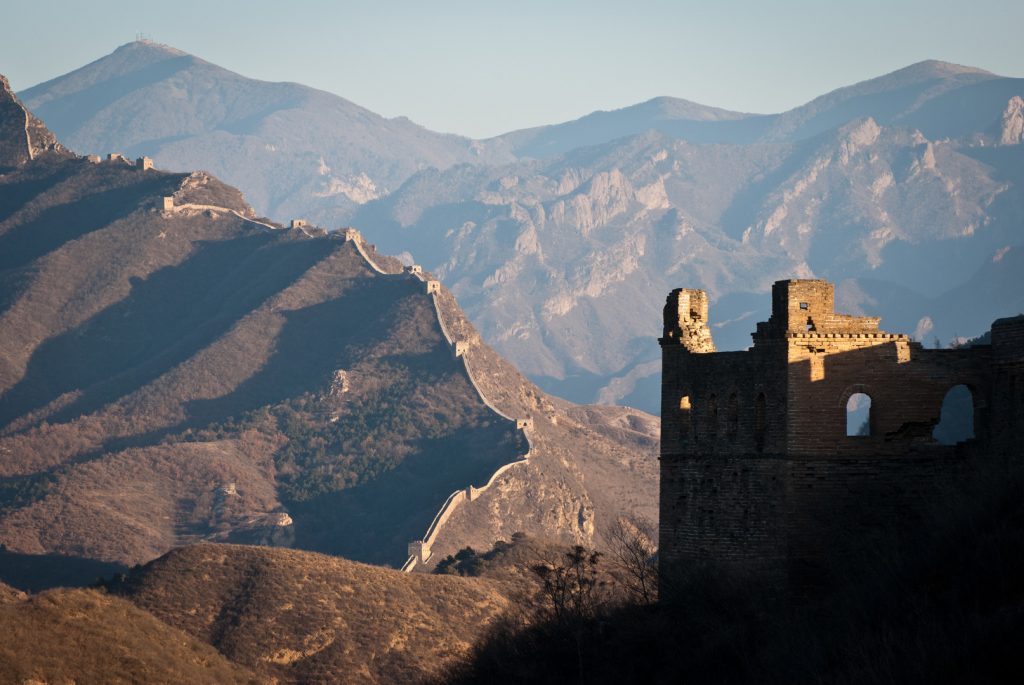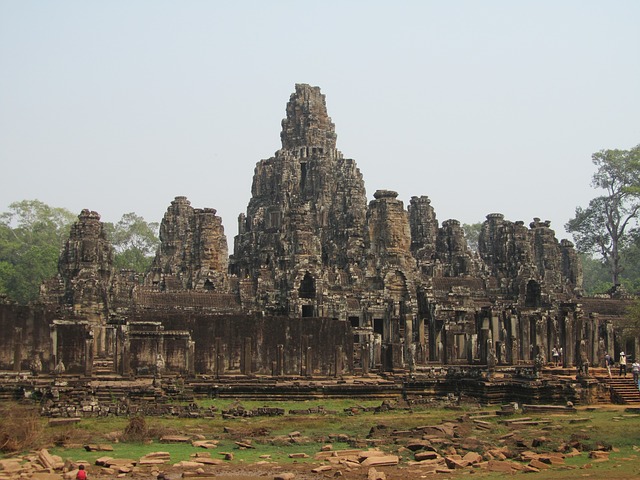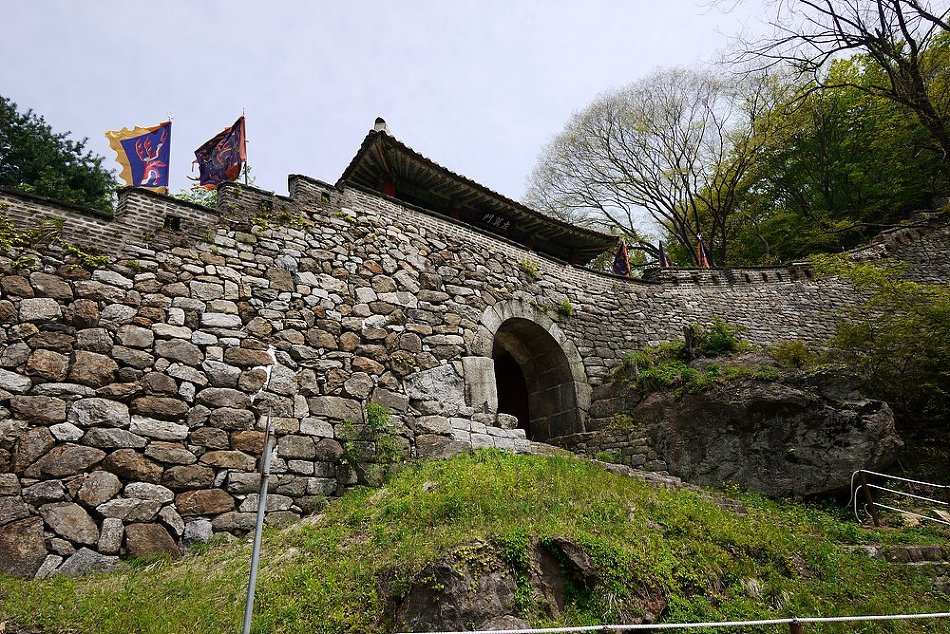UNESCO World Heritage Sites in Asia
Home to a promising market and a booming economy, Asia is definitely the world’s hottest region nowadays. It’s also becoming more and more commonplace for people around the globe to consider Asia as their next vacation destination. From the Taj Mahal to the Great Wall, Asia is full of wonderful and mysterious places to visit. Let’s have a quick look at some of the wonderful UNESCO World Heritage Sites in Asia!
#1 Taj Mahal (India)
 (Photo courtesy of wikimedia, http://bit.ly/1w3S8dU)
(Photo courtesy of wikimedia, http://bit.ly/1w3S8dU)
Regarded as one of the eight wonders of the world, Taj Mahal is considered by many historians to be the most beautiful architectural masterpiece in history. Taj Mahal was built by Muslim Emperor Shah Jahan in the memory of his dear wife and Queen Mumtaz Mahal at Agra, India. Listed as a World Heritage in 1983, the stunning palace is known to present its finest at dawn and sunset.
#2 Great Wall (China)
 (Photo courtesy of Wikipedia, http://bit.ly/1sA7rLm)
(Photo courtesy of Wikipedia, http://bit.ly/1sA7rLm)
The Great Wall of China is a truly mammoth structure. The entire length of the wall is said to be 21,196km long, almost half the circumference of planet Earth! If you’re like most travelers and can’t walk that much, then stop by the most famous part of the Great Wall at Jinshanling, built by the first Emperor of China Qin Shi Huang.
#3 Angkor (Cambodia)
 (Photo’s courtesy of pixaboy, http://bit.ly/1n9Hxst)
(Photo’s courtesy of pixaboy, http://bit.ly/1n9Hxst)
The stunningly mysterious ancient complex used to be the capital of the Khmer empire, which dominated mainland South-East Asia for centuries. The name “Angkor” derives from Sanskrit, meaning “city”. Let yourself be awed following the architectural footsteps of the ancients.
How many of these famous UNESCO World Heritage Sites have you visited? There are still so many more sites to introduce, but today, Hello, POSCO has prepared one particular recommendation: Namhansanseong in Korea. Shall we take a virtual tour to the historic monument that has been newly listed as a World Heritage Site in 2014?
In the Bucket List: 2014 UNESCO World Heritage Site Namhansanseong
 (Photo’s courtesy of Wikimedia, http://bit.ly/1mLJykv)
(Photo’s courtesy of Wikimedia, http://bit.ly/1mLJykv)
Namhansanseong has been newly listed as a UNESCO World Heritage Site in 2014, making it one of the hottest places to visit in Korea along with Gyeongbokgung(ancient royal palace), Bukchon Hanok Maeul(village of traditional houses), Namdaemun Market(bustling market in front of an ancient guard tower), and Insadong(traditional folk village). On May, beneficiaries of the POSCO Asia Fellowship Program, a scholarship program by POSCO TJ Park Foundation, visited Namhansanseong and were awed by its splendor.
[box] POSCO TJ Park Foundation & POSCO Asia Fellowship
POSCO demonstrates its commitment to being a socially responsible corporation through the POSCO TJ Park Foundation. The foundation promotes POSCO’s global citizenship through the management of various structured programs. Among the foundation’s programs are: POSCO Asia Fellowship, which goal is to promote understanding and mutual growth among Asian nations; POSCO TJ Park Prize, which is awarded to those who have made outstanding achievements in the fields of science, education and volunteer work; and TJ Park Science Fellowship, which supports the research of basic scientists in Korea.
The POSCO Asia Fellowship program is a scholarship program that supports prospective leaders of Asia by providing tuition and living expenses to young intellectuals from Asian countries as they enroll for Master’s or Doctoral courses at some of the prestigious Korean universities and institutions and learn more about various aspects of Korean society and culture. Whereas scholarships in Korea are generally designed to benefit Koreans who wish to study abroad, this project is unique in that it brings non-Korean Asian students to Korea to help them establish intimate relationships with the Korean society. The Foundation believes that this program will not only enhance the participants’ expertise in their individual fields of study, but also help them grow as global leaders and provide them with a deeper understanding of Korea by giving them opportunities to gain first-hand knowledge of the people and the culture. [/box]
Places to visit at Namhansanseong
The POSCO Asia Fellowship scholars took Route #1, otherwise known as “the road of history and life” at Namhansanseong. The 3.8km-long route takes 80minutes to finish, so it’s the best course for beginners looking for a short and easy walk.
Sueojangdae: The Command Tower
 Sueojangdae (Photo’s courtesy of Gyeonggi Province Blog, http://bit.ly/1jfzxeC)
Sueojangdae (Photo’s courtesy of Gyeonggi Province Blog, http://bit.ly/1jfzxeC)
Sueojangdae, or the Command Tower, is located at the west of Namhansanseong. The two-story tower, built to command the army and investigate the enemy from afar, is the only remaining tower left in the fortress. The signboard on the 2nd floor that reads Mumangru (“Never Forget”) was written by King Youngjo himself, as a reminder of the humiliating defeat of the Manchu War of 1636. During the War, then King Injo was forced to bow three times to the Manchu King, and his son Hyojong was sent away as prisoner for 8 years. The words “Never Forget” on the signboard embodies King Youngjo’s determination to seek revenge for the humiliating historic incident.
Seoammun: The Secret Passage beneath the Command Tower
Beneath the Command Tower, the students discovered the secret passage “Seoammun”. The passage was something they had never seen before, and the students became immersed in Korean culture by sneaking into the passage themselves 🙂
For more information on recommended routes and locations, check out the official Namhansanseong homepage here (Link)
Epilogue: POSCO Asia Fellowship Scholars share their impressions of Namhansanseong
 After their visit to Namhansanseong, the POSCO Asia Fellowship Scholars felt their love and understanding of Korean culture grow. Let’s take a look at the comments from some of the students after the tour!
After their visit to Namhansanseong, the POSCO Asia Fellowship Scholars felt their love and understanding of Korean culture grow. Let’s take a look at the comments from some of the students after the tour!
 “It was a great opportunity to enjoy a beautiful view and the awesome Namhansanseong. We don’t have anything like this in Kazakhstan. More than anything, I was smitten by the Korean full course meal we had after sightseeing. I’m deep in love with Korea now. Spasibo (Thank You), POSCO!” – Rafael Vecsentayev ( Graduate School of Sogang University, Kazakhstan)
“It was a great opportunity to enjoy a beautiful view and the awesome Namhansanseong. We don’t have anything like this in Kazakhstan. More than anything, I was smitten by the Korean full course meal we had after sightseeing. I’m deep in love with Korea now. Spasibo (Thank You), POSCO!” – Rafael Vecsentayev ( Graduate School of Sogang University, Kazakhstan)
 “I think Mongolia and Korea are similar in many ways. The people look similar, and they both emphasize the importance of living in harmony with Mother Nature. These similarities make me feel more at home in Korea. I sincerely thank POSCO and the TJ Park Foundation for giving me such a wonderful opportunity. I’ll study harder!“ –Undra Erdenesot (Graduate School of Seoul National University, Mongolia)
“I think Mongolia and Korea are similar in many ways. The people look similar, and they both emphasize the importance of living in harmony with Mother Nature. These similarities make me feel more at home in Korea. I sincerely thank POSCO and the TJ Park Foundation for giving me such a wonderful opportunity. I’ll study harder!“ –Undra Erdenesot (Graduate School of Seoul National University, Mongolia)
“The Great Wall of China is much larger than Namhansanseong, but is less in harmony with the surrounding nature. Namhansanseong has a truly beautiful view” – Yuriwan (Seoul National University, China)
If you haven’t put Namhansanseong in your travel bucket list for Korea yet, now’s the time to do it! Have a wonderful and meaningful time learning about Korean history and culture at the UNESCO World Heritage Site Namhansanseong!
